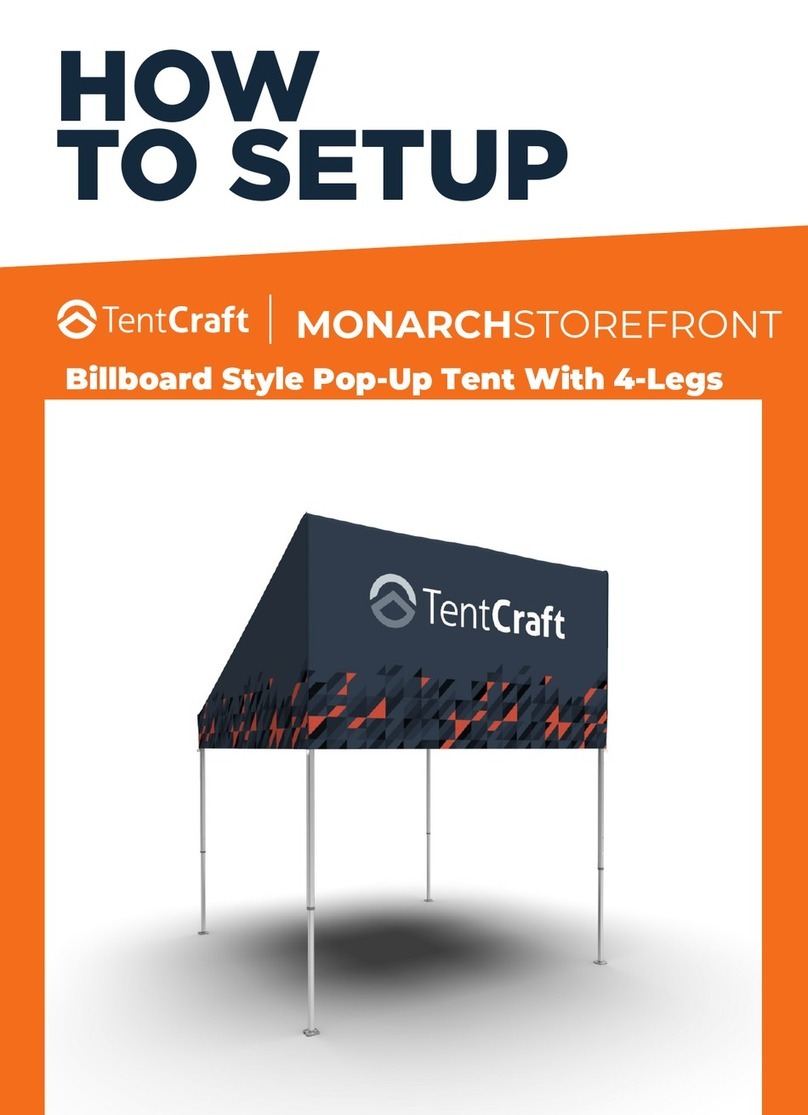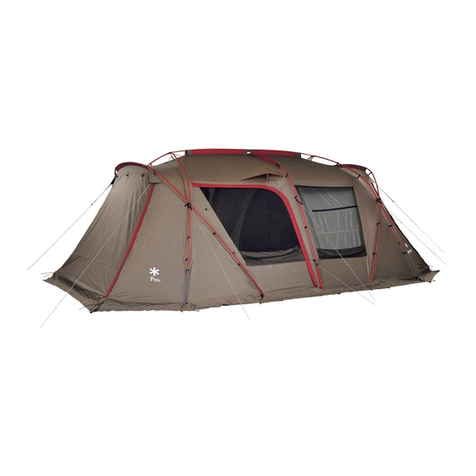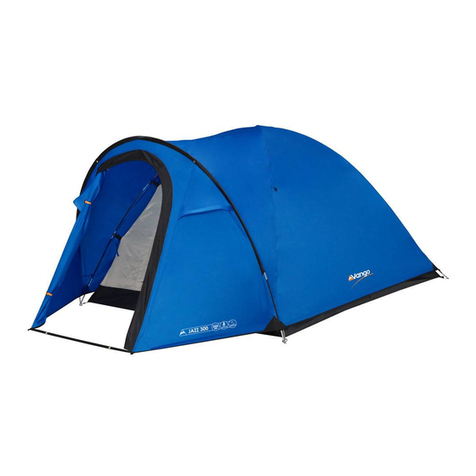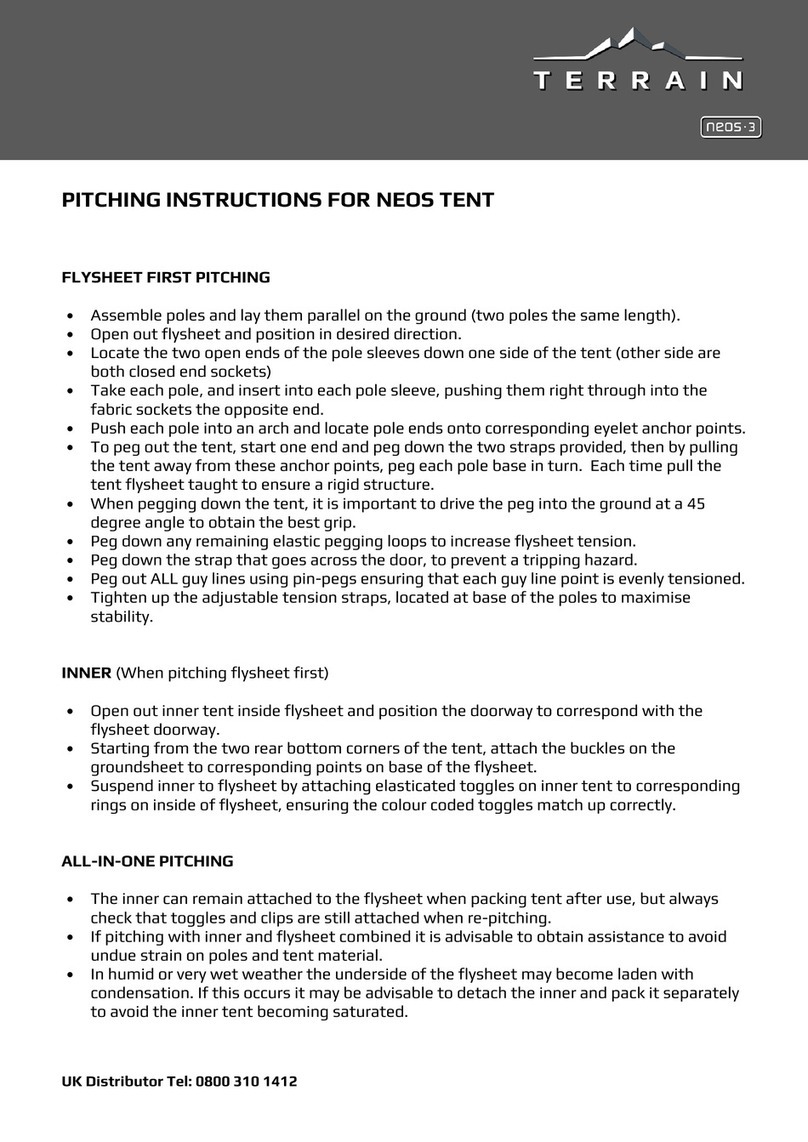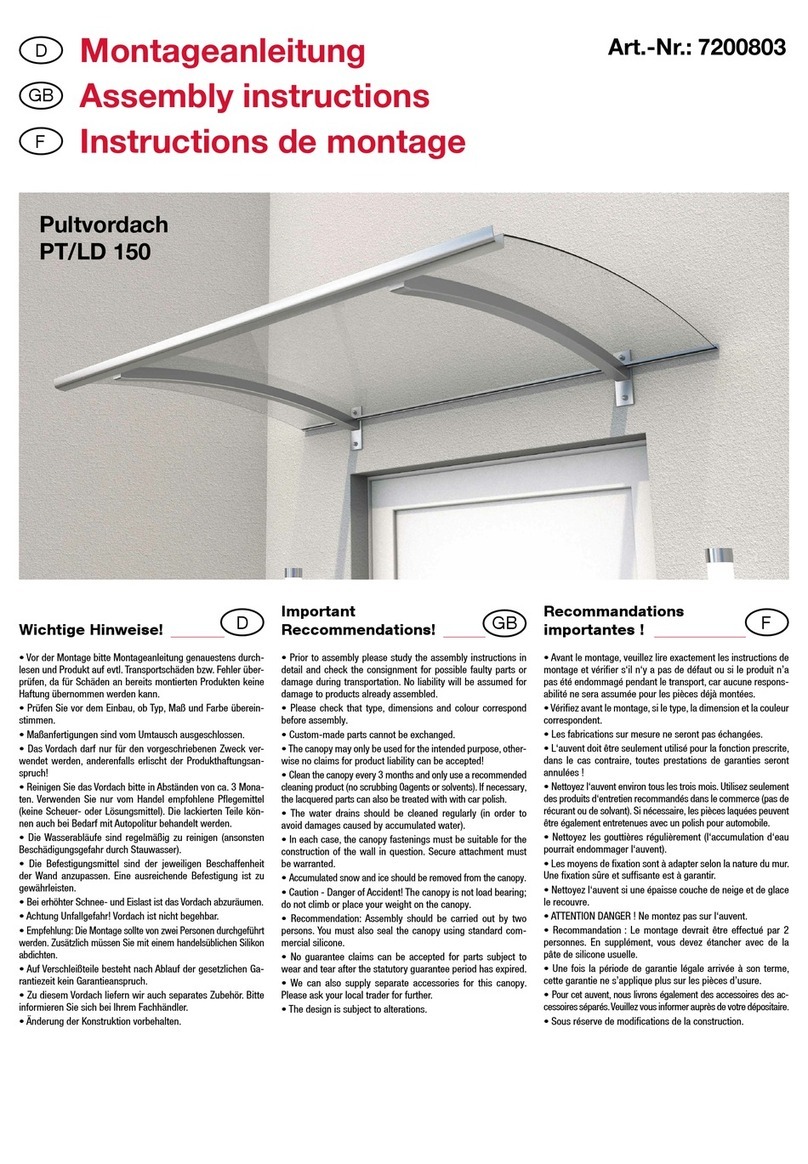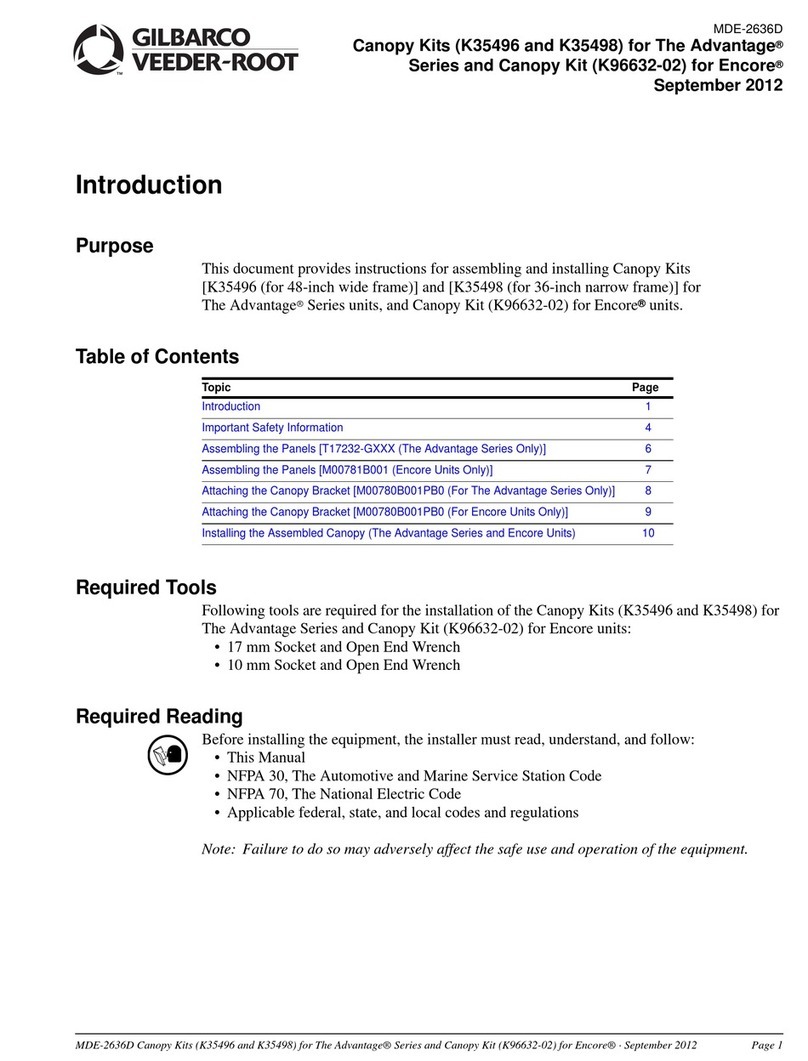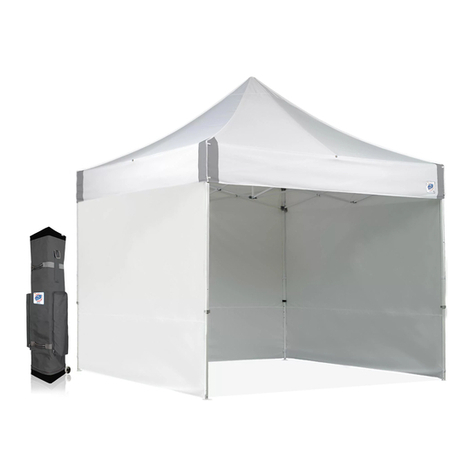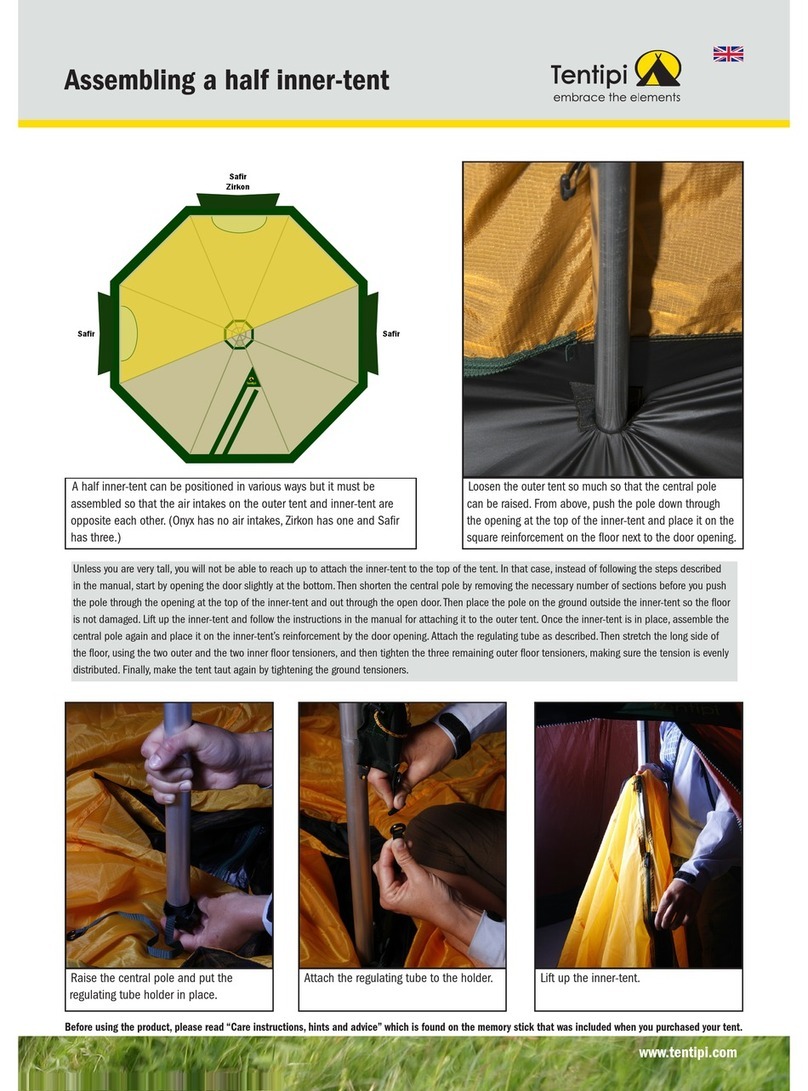TentCraft S-Series Manual

S-SERIES | 15x15
SETUP INSTRUCTIONS

THANK YOU FOR PURCHASING A
15x15 | S-SERIES TENT!
If you have questions about installation, maintenance, or take down, please call us at (800)426-9496. Our
goal is that you are completely satisfied with our products. Please read this installation manual carefully and
follow all instructions contained herein. Please note that the installer is responsible for the site selection,
installation and use. Do not erect during inclement weather and follow all safety procedures during the
installation and take down process.
Please contact all utility companies for underground services. In many states, the utilities work together and
have formed a Utility Locating Service. It is your responsibility to locate all the underground services, includ-
ing speaking to the owner about irrigation, pool and other special services that they may have installed. Also,
please note that special precautions should be taken such that any overhead powerlines are duly noted and
avoided during the tent erection process.
To provide the quickest possible service, please fill in the information below so that we may effectively help
you should a problem arise.
TentCraft Inc in no way represents the estimated holding power to be true in all cases. It is an
estimate, and as such, does not imply that the figures are sufficient to hold any tent securely in
windy or adverse weather conditions. The tent installer accepts sole responsibility for the safe
installation, teardown, and maintenance of any tent. TentCraft does not represent in any way that
the materials provided with the purchase of the tent are sufficient enough to hold it up in windy or
adverse weather conditions. There is no way for TentCraft to know the site conditions or the
weather conditions at the event to be able to recommend the adequate amount of holding power
needed to hold the tent safely in position. Furthermore, we are not responsible for the methods
which the installer uses to erect the tent or anchor it in position. Installers MUST be empowered
to deem the tent unsafe for occupancy if/when the weather becomes unstable. For further
recommendations on determining necessary staking values, please consult the IFAI Procedural
Handbook for the Safe Installation and Maintenance of Tentage and the IFAI’s Pullout Capacity of
Tent Stakes. These resources are available from the IFAI Tent Rental Division.
MODEL SIZE JOB NUMBER
S-SERIES | 15x15
2

HERE’S WHAT YOU’RE
WORKIN’ WITH...
Qty: 4 - 8’ Legs (96”)
Qty: 4 - Perimeter Pole Connectors (48”)
Qty: 8 - Perimeter Poles (81”)
Qty: 4 - 3’ Stakes
Qty: 4 - 18” Stakes
Qty: 4 - S-Series Tent Top Straps
S-SERIES | 15x15
3
PERIMETER POLES
PERIMETER POLE
CONNECTORS
CORNER
BRACKETS
CENTER
POLE
8’ LEGS
15’ CABLES
Qty: 1 - Center Pole (83”)
Qty: 2 - 15’ Cables
Qty: 4 - Baseplates
Qty: 4 - OutGuy Straps
Qty: 4 - Corner Brackets

Step 1
S-SERIES | 15x15
4
Inspect the tent site thoroughly for obstacles, underground and overhead
wires, pipes, etc. If necessary, consult with your local utility company prior
to installation.
Step 2
Lay out the erection site by first placing the corner brackets, perimeter pole
connectors and perimeter poles in sequence per the diagram to the left for
assembly. Do not install legs at this time.
Step 3
Begin assembly of the frame by inserting the perimeter poles into the perime-
ter pole connectors. Then, connect the perimeter poles into the corner brack-
ets. Continue this process until the perimeter framework is assembled.
Step 4
Attach cross cables to opposite corners of the structure per the diagram to
the left. Use turnbuckle on cables to tighten them to the proper tension
(cables should be taught and not touching the ground. Caution: over-tension-
ing will cause the perimeter poles to bow in towards the center of the tent.)

Step 5
S-SERIES | 15x15
5
Unroll vinyl top across frame making sure the extra peak material is on top of
the setup. Stretch the corner webbing loops sewn into the tent top over the
cast eyelet on the outside of the corner bracket. Note that the last corner
may be difficult to stretch over the eyelet, especially in cold conditions.
Step 8
Install remaining two legs and bases. Make sure the cast hook on the footpad
points to the outside of the corner leg.
Step 6
Install two adjacent legs by raising the frame on one side. (It is important to
note the wind direction at this point and lift the legs opposite the direction of
the wind). Install baseplates at this point and make sure the cast hook on the
baseplates point away from the tent.
Step 7
Install center pole by carefully inserting the pin end through the peak ring in
the center of the tent top. Once peak pole is inserted through the peak cap,
place the roller on the bottom of the peak pole on the top cable. Roll peak
pole into position and place the bottom cable in the opposite notch on the
peak pole base. Secure pins with provided D-Pin.
ROLL
ROLL ROLL
ROLLERROLLER

Attach the bottom looped end of the tent top straps to the cast hook on the
footpads. Locate the ratchet in the middle of the strap and tighten until the
strap is taut enough to secure the canopy. Repeat this step at the remaining
three corner legs.
Once the top is secured on all corners, fold all extra strap length into the
white vinyl covers with velcro closure.
Step 9
S-SERIES | 15x15
6
Step 10
Step 11
Step 12
Attach tent top to the frame with the tent top straps. Bring the “Y” straps
(located at the very top of the tent top straps) through the metal rings on
each of the tent top valances and secure the looped ends of the “Y” straps
into the carabiner. Fold the valance flap over the “Y” straps where the strips
of velcro line up to finish the corner. Repeat this step at the remaining three
corners. **Do not hook carabiner directly to metal valance rings!**
Once all stakes have been secured and straps ratcheted taut, fold all extra
outguy strap length into the white vinyl covers with velcro closure.
Locate the outguy straps and connect the carabiner at the top of the strap to
the cast eyelet that is on the outside of each of the corner brackets. Locate
the 3’ ground stakes and wrap the looped strap (found at the bottom end of
the outguy straps) around the head of the stake twice. Drive the stakes into
the ground 5’ out from each corner leg and ratchet the strap until it is taut.
Repeat this step on the three remaining corner legs.

Anchoring Requirements (Non-Certified Tents)
Non-certified tents are not engineered to meet specific wind loads. Wind loads are approximate and are
generally rule of thumb calculations used in the industry based on actual field experience. Windload of a
non-certified tent will very to a maximum of approximately 30 to 50 mph dependent upon the style of type
of tent. The structural integrity of the tent may exceed the soil's holding capacity even at wind loads of
30 to 50 mph.
Frame tents require approximately 1000 to 2000 lbs of holding power per anchor location (dependent on
the size and style of the tent). For safety of all occupants, evacuation is recommended if weather
becomes severe.
Severe storms have micro bursts of wind that may be recorded far in excess of t he storm's highest
winds. The installer is responsible for properly securing the temporary structure (tent). Soil conditions
will vary and the wind loads that the temporary structure can handle could be significantly below its wind
load capabilities.
S-SERIES | 15x15
Guy Data:
1" Polyester Web - 3600 # rating*
*ASSUMES:
1. Surface: Compacted soil
2. Standard pull-out rate 800 lb/sq ft.
3. Normal staking configuration/conditions
36" Stake driven within 6" from the
top of the ground straight down or
a maximum 10 degree angle
7
14’6”
8'
5'
15'
*Holding power is based on firm soil conditions. If other conditions prevail, the holding power will
decrease and alternate anchoring methods are required.
Tent Size
Square
Footage
Anchor
Power
Required
Safety
Factor
Anchor
Locations
Holding Power
Required at Each
Anchor Location
10’x10’ 100 960 1.5 4 240*
Note: The tent must be anchored properly for safe installation. Additonal guys and stakes
may be required depending on soil and/or wind conditions. Refer to the IFAI Procedural
Handbook for Safe Installation and Maintenance of Tentage for calculating the proper
anchoring capacity for soil and or ground conditions. Always follow manufacturer's recom-
mended anchoring techniques.
** S-Series 15’x15’ engineering certification documents are available upon request.**
Table of contents
Other TentCraft Tent manuals
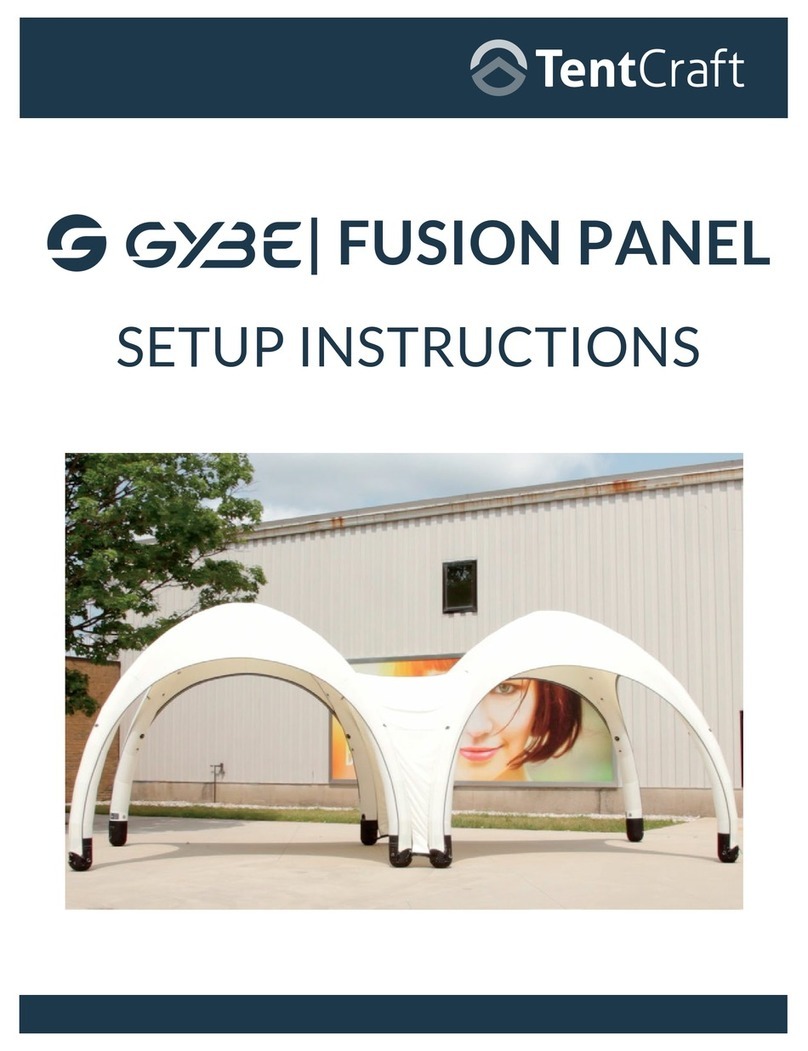
TentCraft
TentCraft GYBE FUSION PANEL Manual

TentCraft
TentCraft 15x15 E Series User manual
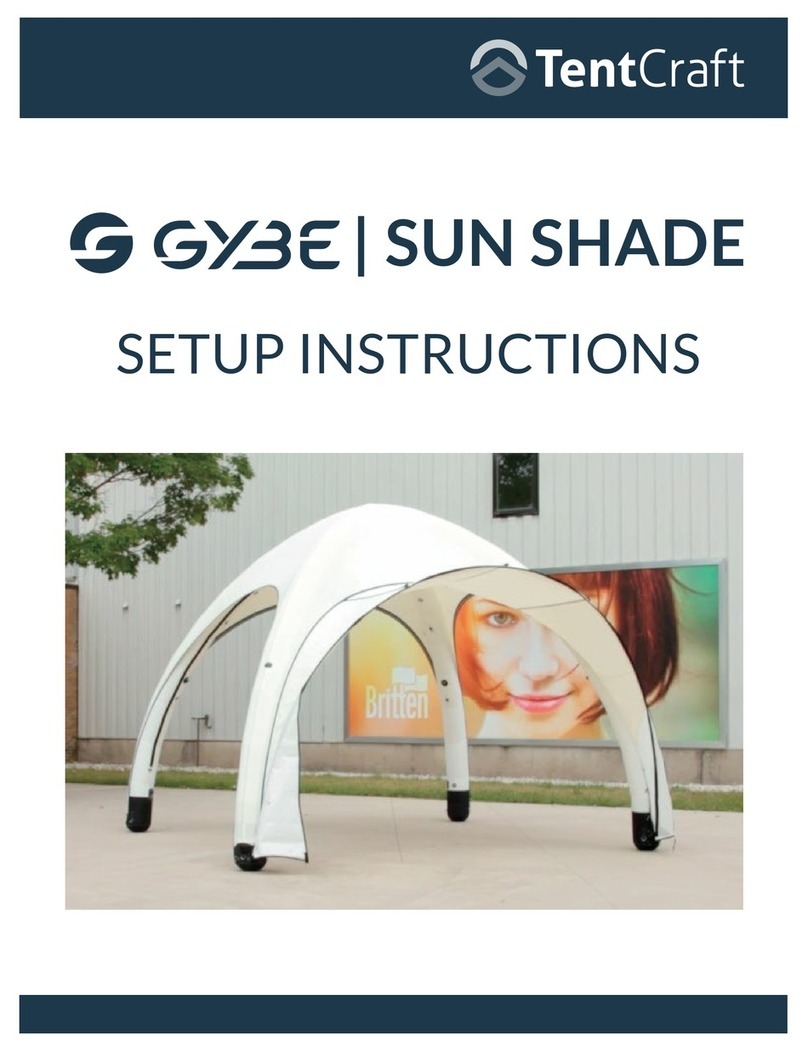
TentCraft
TentCraft GYBE Manual
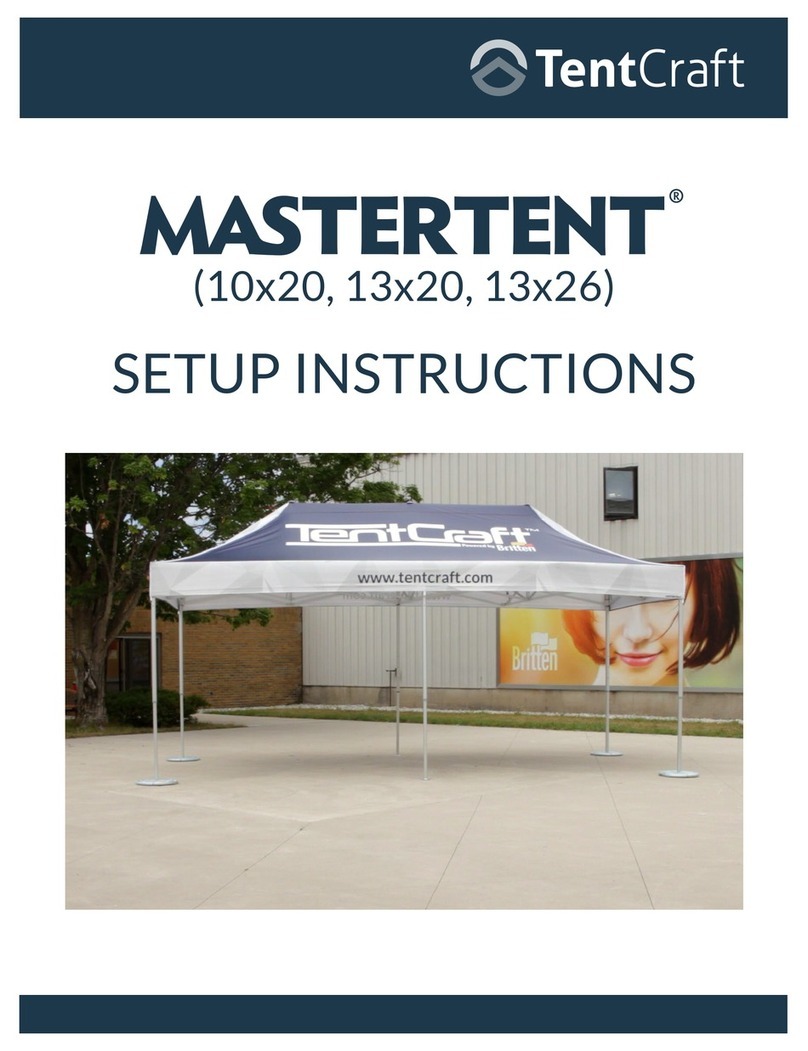
TentCraft
TentCraft MASTERTENT Manual
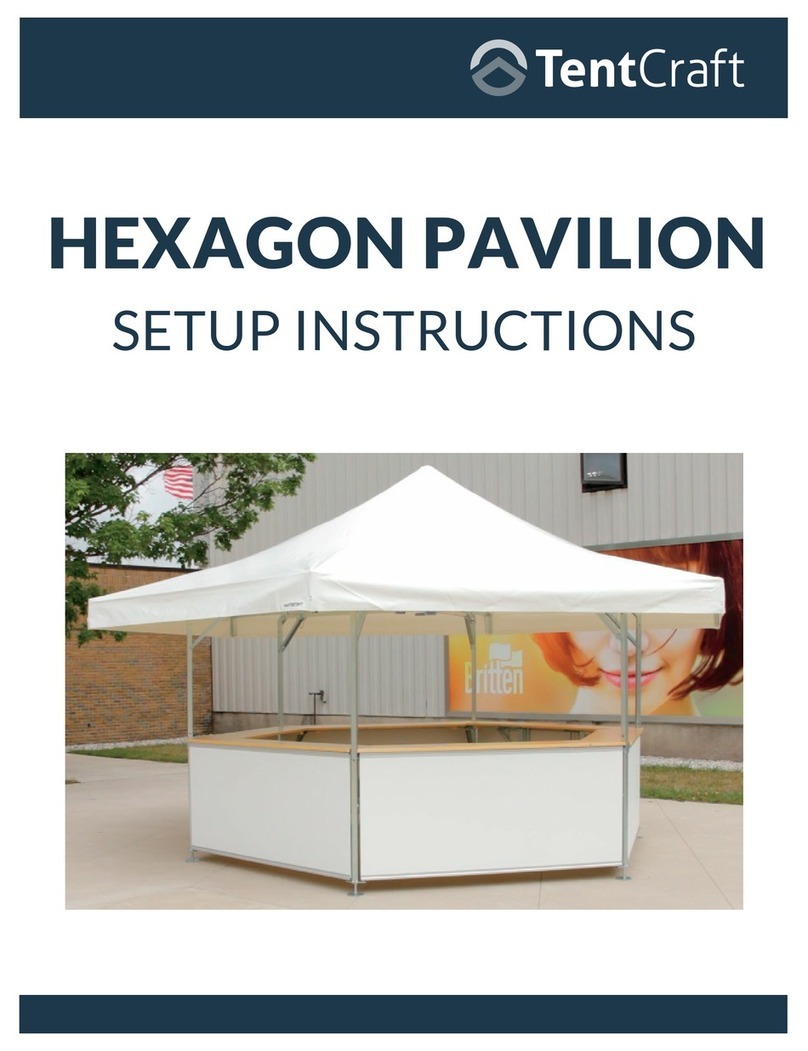
TentCraft
TentCraft HEXAGON PAVILION Manual
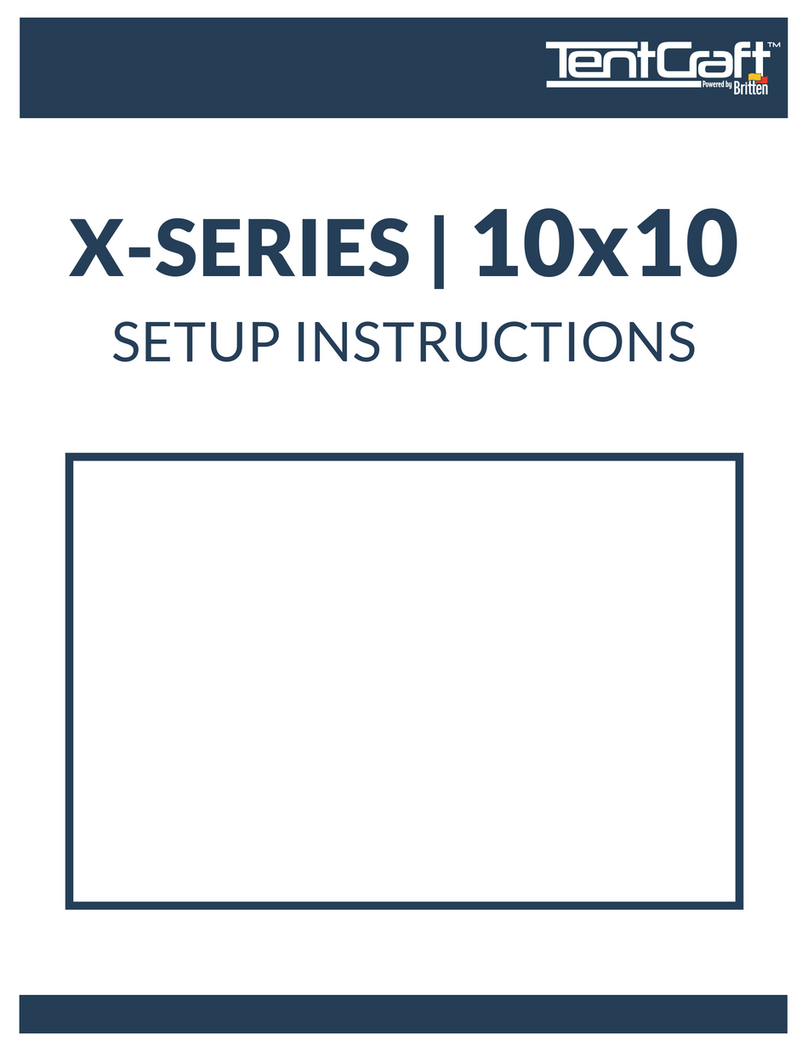
TentCraft
TentCraft X-Series Manual
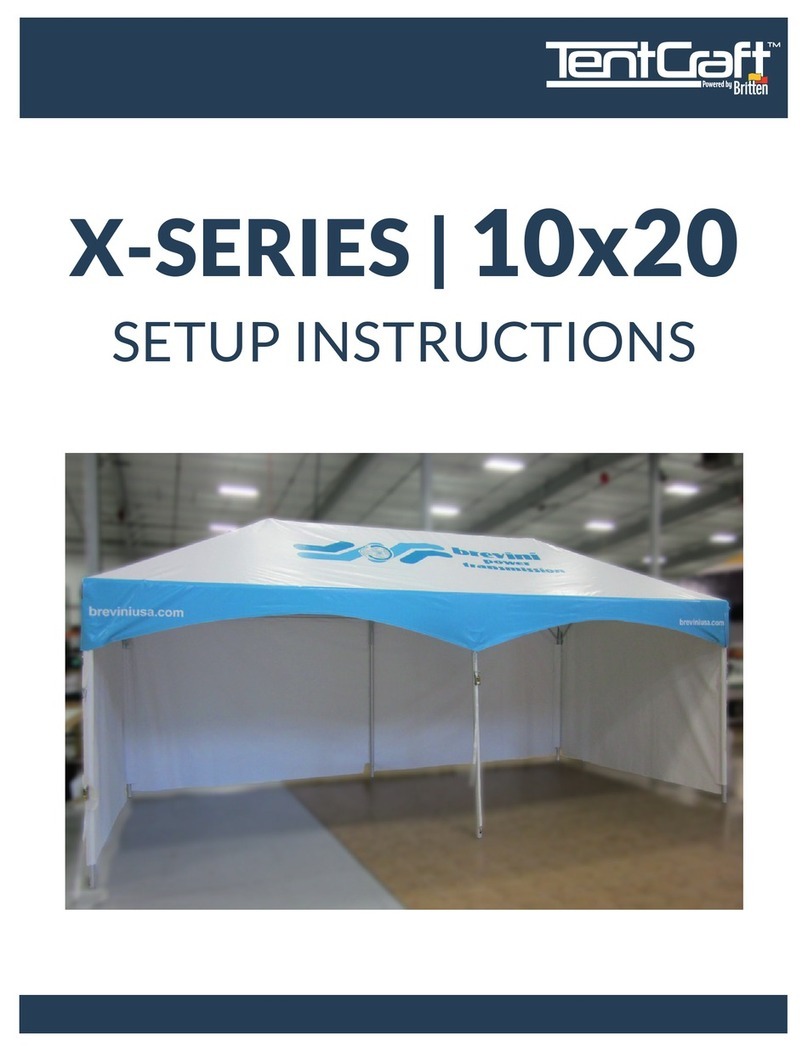
TentCraft
TentCraft X-Series Manual

TentCraft
TentCraft MONARCHSTALL Manual

TentCraft
TentCraft X Series Manual

TentCraft
TentCraft X Series Manual
Popular Tent manuals by other brands
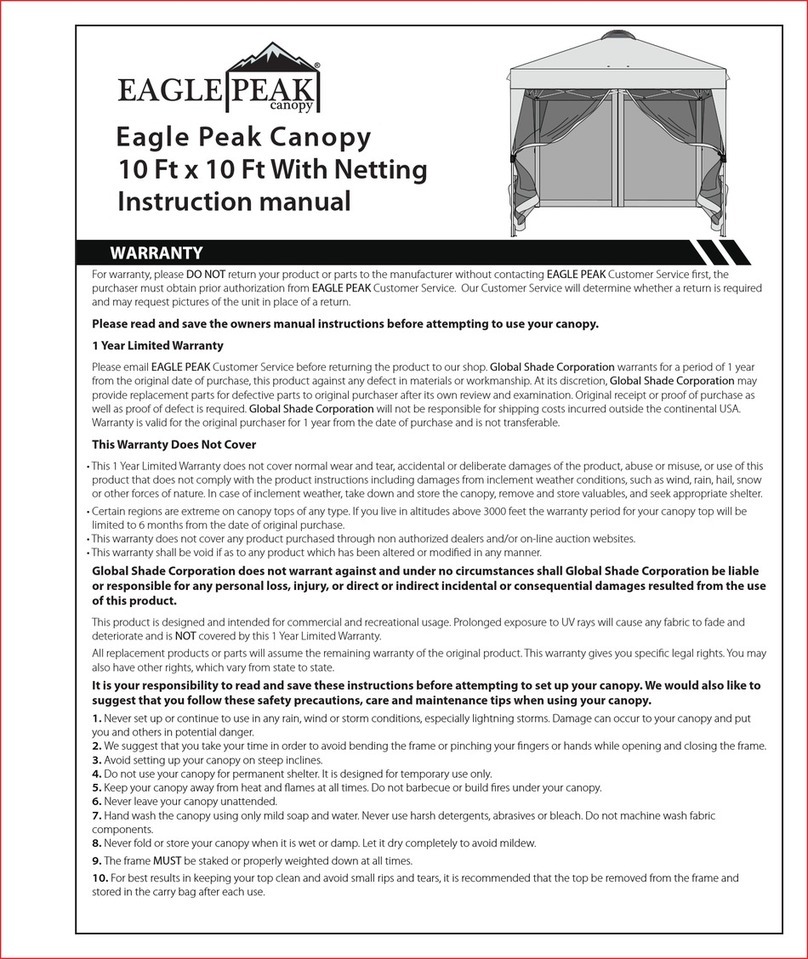
Eagle Peak
Eagle Peak E100MW-WHT-AZ instruction manual

Crivit
Crivit 273728 Assembly instructions
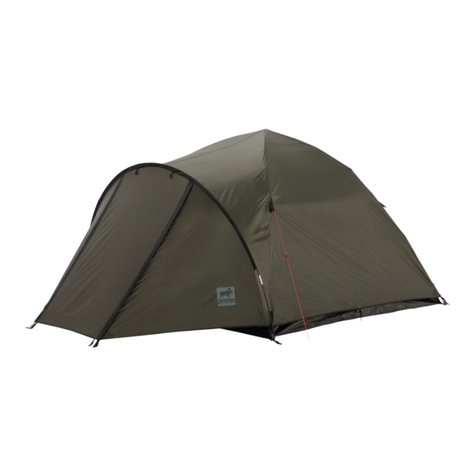
Nordkap
Nordkap SVELVIK quick start guide
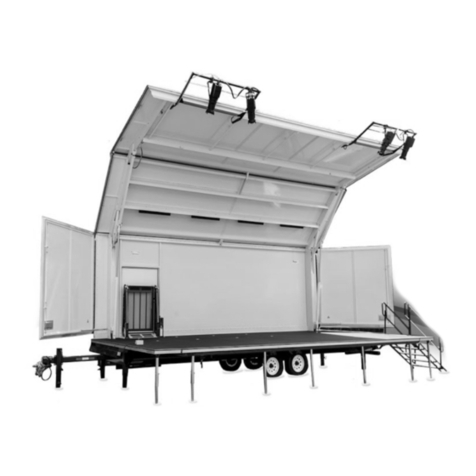
Wenger
Wenger Showmobile Mobile Stage and Canopy owner's manual

L.L.Bean
L.L.Bean Big Woods Dome Tent instructions
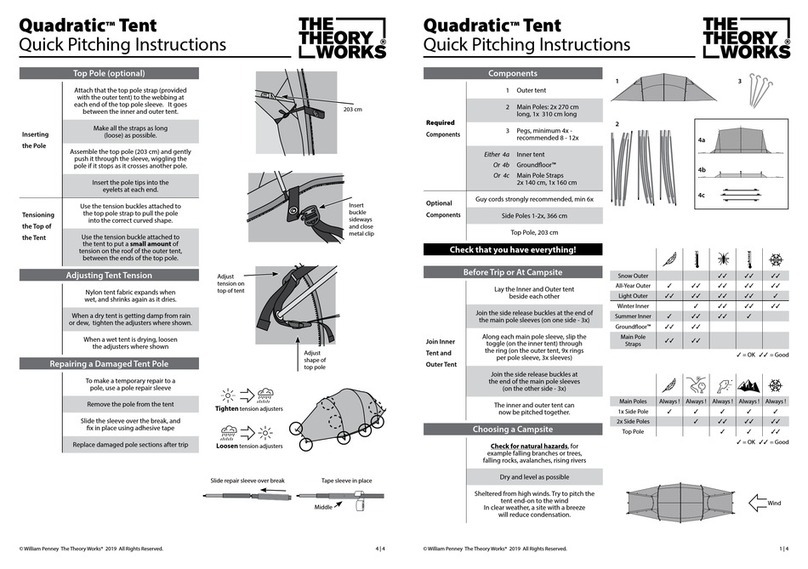
THE THEORY WORKS
THE THEORY WORKS Quadratic operating instructions
